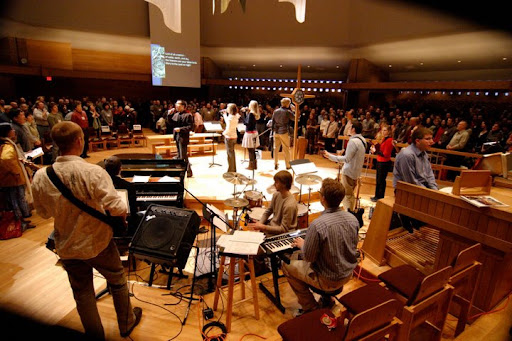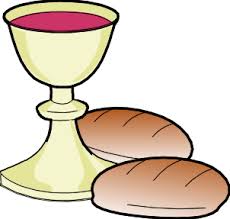 is about worship, there are sessions about children and resources that can be used in adult education.
is about worship, there are sessions about children and resources that can be used in adult education.The workshops are varied. This year I heard Sister Joyce Ann Zimmerman talk about baptism practices during the 1st to the 4th Century. Howard VanderWell discussed profession of faith. Craig Satterlee spoke about the stories of the church (and at that session I received a free book!). Barb Newman presented a session about autism, and Kristen Verhulst introduced and recommended many children’s book about worship. I also enjoyed the Jazz Vespers service led by Ed Dolman and Rae Whitney. I felt like I was resting in the Lord’s palm. It was a great way to complete a busy day.
One of the other benefits of attending Symposium is the free resources. This year five resources were given to participants:
- Contemporary Songs for Worship (Faith Alive
Christian Resources, CICW, 2008).
- Worship Words: Discipling Language for Faithful Ministry, by Debra Rienstra and Ron Rienstra (Baker, 2008)
- Touching the Altar: The Old Testament for Christian Worship, edited by Carol M. Bechtel (Eerdmans, 2007)
- Images of Faith CD, compiled by Sandra Bowden (CIVA, 2008). This CD is full of images that can be used in power point presentations.
- The Father & His Two Sons: The Art of Forgiveness, images from the Larry & Mary Gerbens Collection (Eyekons, 2008)
We used the Contemporary Songs book immediately because it featured songs the children could learn in Sunday school and could also be used in the congregational worship service.
No discussion of Symposium is complete without talking about the worship services. There are six worship services over the three days. The services are inspirational and well organized. The group of people who gather at symposium can sing! It is a joy to be part of the singing. I go there looking for ways to include children, teens, and more lay adults in worship, and I always find new things to try in my church. These may be from the readings, music, or art ideas presented. Perhaps the best part of worship at Symposium is that I don’t have any extra responsibilities like I do at my own church. I can direct all of my attention on worshiping God!
Worship Symposium is not a conference about curriculum or programs. It is a conference that focuses on worship and how all the programs and people in a congregation can be involved and nurtured by worship. When I go, I listen to the theology, stories, and music of the church, and that enriches me and nourishes my ministry.
Check out the resources on the Calvin Institute of Worship website.
How would you describe the relationship between worship and education? How do the two intersect in your congregation?




